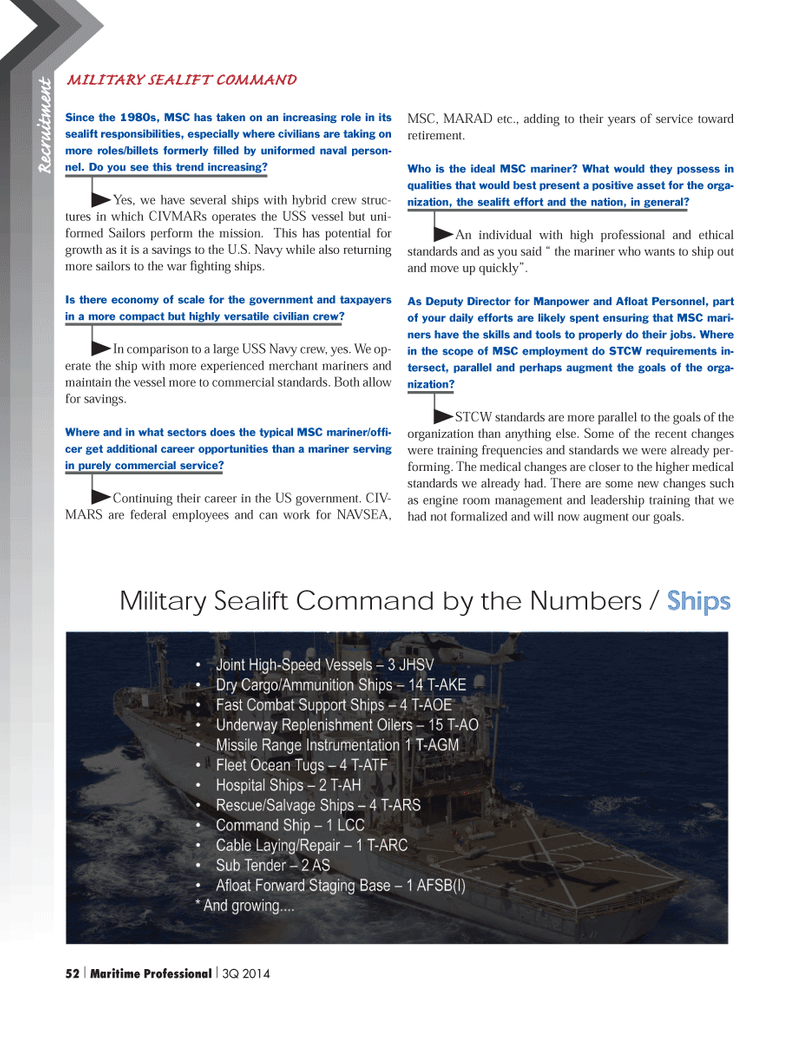
Page 52: of Maritime Logistics Professional Magazine (Q3 2014)
Power & Fuel Management
Read this page in Pdf, Flash or Html5 edition of Q3 2014 Maritime Logistics Professional Magazine
Recruitment Recruitment Since the 1980s, MSC has taken on an increasing role in its sealift responsibilities, especially where civilians are taking on more roles/billets formerly Þ lled by uniformed naval person- nel. Do you see this trend increasing? Yes, we have several ships with hybrid crew struc- tures in which CIVMARs operates the USS vessel but uni- formed Sailors perform the mission. This has potential for growth as it is a savings to the U.S. Navy while also returning more sailors to the war Þ ghting ships. Is there economy of scale for the government and taxpayers in a more compact but highly versatile civilian crew? In comparison to a large USS Navy crew, yes. We op- erate the ship with more experienced merchant mariners and maintain the vessel more to commercial standards. Both allow for savings. Where and in what sectors does the typical MSC mariner/ofÞ -cer get additional career opportunities than a mariner serving in purely commercial service? Continuing their career in the US government. CIV- MARS are federal employees and can work for NAVSEA, MSC, MARAD etc., adding to their years of service toward retirement. Who is the ideal MSC mariner? What would they possess in qualities that would best present a positive asset for the orga- nization, the sealift effort and the nation, in general? An individual with high professional and ethical standards and as you said Ò the mariner who wants to ship out and move up quicklyÓ. As Deputy Director for Manpower and Aß oat Personnel, part of your daily efforts are likely spent ensuring that MSC mari- ners have the skills and tools to properly do their jobs. Where in the scope of MSC employment do STCW requirements in- tersect, parallel and perhaps augment the goals of the orga- nization? STCW standards are more parallel to the goals of the organization than anything else. Some of the recent changes were training frequencies and standards we were already per- forming. The medical changes are closer to the higher medical standards we already had. There are some new changes such as engine room management and leadership training that we had not formalized and will now augment our goals. MILITARY SEALIFT COMMAND Military Sealift Command by the Numbers / Ships52 | Maritime Professional | 3Q 201450-63 Q3 MP2014.indd 5250-63 Q3 MP2014.indd 528/13/2014 2:47:40 PM8/13/2014 2:47:40 PM

 51
51

 53
53
